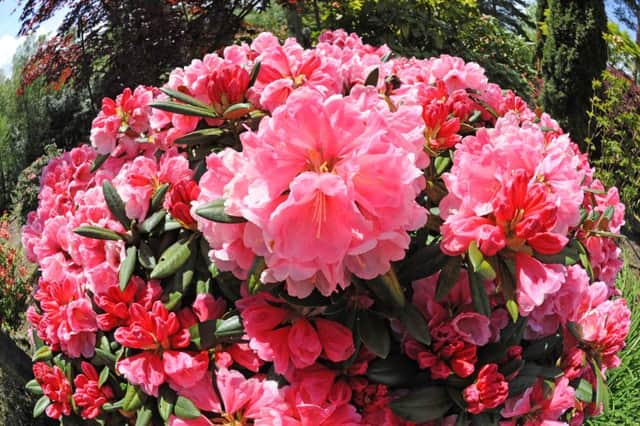BRIAN KIDD: A radical no-dig plan to save time... and my aching back


Weeds will be removed, the surface hoed and tiny weeds raked off after rain.
A three-inch layer of compost will then be spread over the designated area and it will then be planted up.
Advertisement
Hide AdAdvertisement
Hide AdUsing the hoe once a fortnight will stop the weeds and I am hoping this idea will be succesful. I’ll let you know, but I’m determined to give this a go as I read about this idea when I was an apprentice.
n The camellias have been wonderful this year. They’ve been in flower since January, which makes them the most beautiful of our winter-flowering plants. Now’s the time to give them a treat.
They have a very hard system of roots called a root ball. Once that ball gets dry it is difficult to get it wet again. So at this time of year it’s a good idea to give the ground a good soaking of rain water and then apply a mulch over the top of the soil.
Don’t do this just where the stem is, but apply a four-inch layer of acid compost such as John Innes Ericaceous mix all over the soil right out to the edge of the canopy of leaves. Give this mulch a good soak with rain water.
Advertisement
Hide AdAdvertisement
Hide AdThis will encourage the camellia to produce fibrous roots which will grow into the mulch. It is a good idea to add some Vitax Q4 pelleted fertiliser into the mulch using half-an-ounce to a two-gallon bucket of compost and mixing it well before applying it.
The same treatment can be given to azaleas and rhododendrons, but it’s even more important to remove dead flowers and seeds. If this is done immediately after the flowers fade new shoots quickly grow and next year’s flowers will be on those new shoots.
If any pruning is needed, this needs to be done as soon as the flowers have fallen.
In the case of camellias, they often become too wide or too tall, an entire branch might be overgrowing a path and needs to be removed; now is the time to do the pruning.
Advertisement
Hide AdAdvertisement
Hide AdIf done now camellias will have lots of flowers again next year. If they are pruned any later, especially in the autumn, flower buds will be removed.
Heathers of all kinds can be rejuvenated by clipping off all the dead flowers with shears and if the plants are bare in the centre, buy some thick wreath wires from a florist, bend them over to form a hairpin shape so the outside tips of the stems can be bent round towards the centre of the plants and kept in place with the wreath wires.
The bed is then mulched with acid compost, as for the camellias, so all the bare stems are hidden by the mulch. The stems usually root into the mulch and the heather area looks far better next winter.
We just need the time to get on with these jobs!
TIP OF THE WEEK
When planting a container with summer flowers, pop in two lettuce plants called Salad Bowl. These look bright and have curly leaves and no-one will ever notice you are growing lettuce.
When you need some to eat, cut off just what is needed with scissors and within a week or so the plant will produce more leaves for picking throughout the summer.